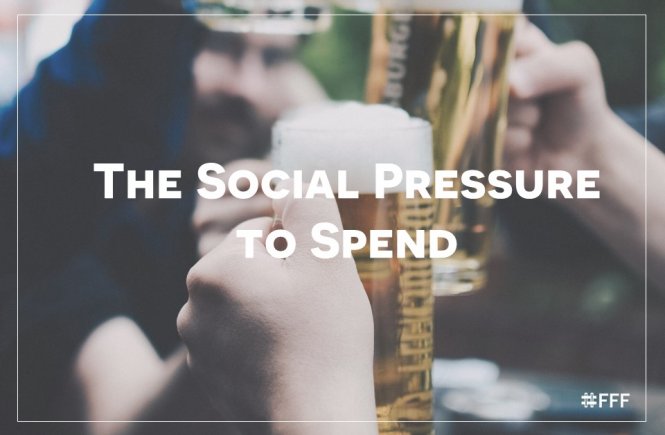We have reached mid-September and it’s time to step up our savings game. In the first week we explored different types of expenses that we have, necessity, want and waste and this week we are going to take a closer look at the want. Before we do that, let’s quickly recap from the first level. We started with understanding the concept of our potential to save. Our maximum potential means that we are only spending on necessities, expenses needed for us to survive. This might result in a lot of money in our bank but it’s not necessarily the optimal way of living our life. Expenses within the category need, investments that gives added value to our life also increases our life quality and a certain amount of want is worth more than the money we would save. To live a good life we need to find the right balance between saving and investing in wants, to find this balance it is great to experiment with the level of savings on the scale of your potential.
Do I Want What I Want?
The necessity expenses are non-negotiable, we need it to live and we can’t cut them. Where we want to spend our money on the other hand can be a huge category. It is easy to mistake a want for a need, we have a habit and we start to believe that we can’t live without something, a smart phone would be a good example of this. Of course we can live fine without one, but we don’t want to, therefore the smart phone is a want. There are different levels within the category of want and it is basically based on how much value it gives you. Based on how much value the expenditure will give you should be the basis of your choice to spend or not to spend.
An expenditure that has a very low level of added value to your life is a waste and should be cut. The reason is simple, you might feel a bit of happiness but saving the money will give you a much higher level of happiness in the big picture and it’s not worth wasting your money on something insignificant. Taking a look at the smart phone again. The functionality of the phone might give you a lot of value and is therefore worth investing in. Buying the latest, expensive phone on the other hand will add a lot of waste expenses because you can get the same functionality with a cheaper brand. However, what gives you value is personal and there are no universal rules for this. If you are a tech enthusiast, having the latest, expensive phone might make you smile and feel excited every time you use the phone. In this case the brand can be a high value investment meanwhile it could be a waste for someone who doesn’t care about tech.
When we want to boost our savings we need to make a change in our life, we can’t keep living the same old life and save more money. Every situation where you are about to spend you have two choices, to spend or to save. One of them will be sacrificed for the other and in order to choose which one it will be it will be helpful to understand what value each option gives to your life. To increase our savings we are going to make sacrifices we didn’t do before, that’s why we want to start sacrificing the expenses that gives us the least value, our waste expenses. To become more aggressive in our saving we need to sacrifice some of our wants too, like mum use to say, we can’t get everything we want. Sacrifice is a negative word and it makes saving sound depressing, it might be for many but we need to remember that spending is equally depressing. Every time we spend money we sacrifice the opportunity to save. But let’s not focus on the depressing side, every time we spend or save we also win. It is always a win – lose situation no matter which we choose. It might feel like a lose – lose situation in the moment we choose to save instead of spending just because we lose the instant happiness. If you take a look at the bigger picture many small expenses gave us insignificant happiness compared to what our savings could’ve provided us.
Why is This Important?
There is a lot of talk about want, need, waste or whatever, but where are the numbers? It’s easy to crunch the numbers and you can set up your savings goals with how much you should spend where in less than an hour. If you want to succeed with your savings goal you need to understand why you spend on what you spend and what will be required for you. It is not nice to sacrifice comfort in life for money that does nothing for you at the moment. If you have a deeper understanding of the purpose of your savings and what you are willing to sacrifice in order to achieve this you are more likely to succeed.
Hot Saving Tips
Two weeks ago your task in this training was to note how much you spend roughly during one month within different categories. After doing this you marked which expenses are necessity, wants and waste. It is great to have the current numbers because then we know our starting point, now we want to take action and make some changes so we can achieve better savings. Saving advice are very personal, what works for one person does not necessarily work for someone else. It is therefore important to try out different ways and be creative until you find what works for you.
Saving tip #1 – Waste
Cut all your waste cost. It doesn’t give you much more in life than an instant insignificant happiness. You’ll be much better off saving that money.
Saving tip #2 – Fixed Expenses
These are expenses you have every month and that is a fixed amount, like rent. Review them and see if you can do any changes. If you have a high rent, can you move? If your insurance is expensive, is there another plan you can have? If your transportation expenses are high, is it possible to take the bicycle or walk to work? If you have a gym membership, are you going? You should review your gym membership at least quarterly to evaluate how much you use it and if you really should keep it. If you don’t use it, cancel it right away! You only need to make the change on the fixed expense once and it will affect all the months to come, it’s like a monthly savings subscription if you manage to lower any of them.
Saving tip #3 – Food
There are tons of ways to save on food but I’ll try to be concise. Going to the cheaper super markets compared to the expensive will make a big difference.
Discounts are great, all super markets (that I know) have weekly discounts, and combining all of them you have a wide range of products to choose between. If any dry food is on discount, stock!
Keep an eye open for the soon to expire products as well, you can easily prolong the lifetime of meat by freezing it.
Don’t throw away food, you are throwing away money as well. Eat what you should eat, over eating and snack adds a lot to your expenses.
Don’t eat out. Of course you can do it once in a while but don’t make it into a weekly habit. For every time you eat a home cooked meal you save a lot of money.
Saving tip #4 – Clothes
Most likely you have enough clothes to manage your life and every piece we buy is just an extra piece we could live without. It also means that it’s money we could’ve saved and we most likely need to get rid of other clothes that we are not using anymore, not because it’s broken but because we have a lot of other clothes that we prefer. Review your wardrobe and note down what you need, next time you go shopping make sure that you only buy clothes that is on that list.
Saving tip #5 – Other
Whatever you spend your money on make sure that it gives you value. Not some lame value that this donut will taste absolutely amazing. If you want to really improve your savings you’re gonna have to have better reasons than that to spend your potential savings on.
I’m sure that none of these tips are new to you. It’s because saving money is not complex and all it takes is to realize what you need to do and then do it. What other saving tips can you come up with that would help you improve your savings?
What I want you to remember from this post is that saving or spending is always a win – lose game no matter which side you choose. What’s important is to identify which side gives more value and that’s where you should bet your money.




